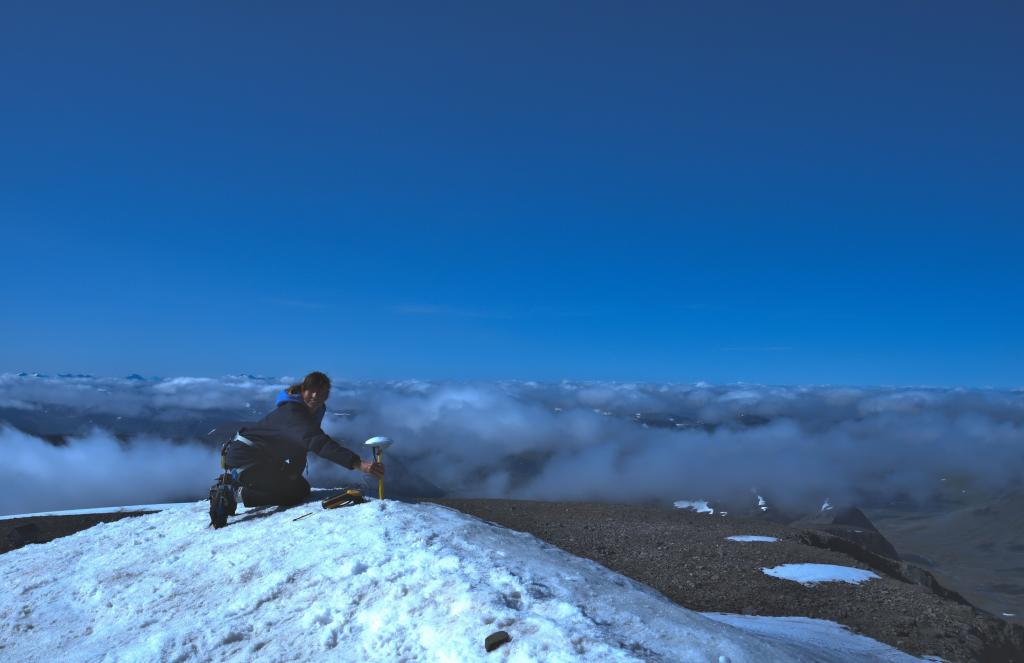Thessaloniki gets ready for its metro launch in November
The underground rapid transit lines have been under construction for almost two decades due to various project delays
 TheMayor.EU logo
TheMayor.EU logo 
Taking measurements on Kebnekaise, Source: Bolin Centre for Climate Research at Stockholm University
Because of this, Kebnekaise’s southern peak got demoted to second place
Kebnekaise is Sweden’s highest massif. It is located in the north, not far from the Norwegian border and its particularity lies in the fact that it has been progressively losing altitude since measurements began there in the 1940s. This is possible because of two factors – the first is that the peak is part of the body of a glacier and the second is that rising temperatures have been melting said glacier.
On 14 August, Stockholm University reported that the southern peak of the massif is now two metres lower than it used to be last year and currently measures at 2094.6 metres. This also means that the neighbouring northern peak is now Sweden’s highest point (2096 metres).
The measurements, carried out by Stockholm University, show that the south peak's snowdrift varied in both height and shape during the 20th century. The height fluctuates two to three meters between summer and winter. Normally the peak is at its highest in May and lowest in September.
One may wonder what the big deal is then. The answer is straightforward – the peak has never been this low in all of the 75 years of measurements. And that might be a cause for concern.
According to glaciology professor Per Holmlund, this event is indicative of the glaciers' response to Sweden's increasingly warmer climate.
Think about it. Back in the 1980s Swedish students used to read in their geography textbooks that the country’s highest point measured 2111 metres. Naturally, there is still a chance that the southern peak will grow back once again during the winter and recover its primacy. However, it also seems certain that its best days are behind it. At least, if it is any consolation, climbing it will be a tad easier.

The underground rapid transit lines have been under construction for almost two decades due to various project delays

Now you can get your wine in Talence by paying directly in Bitcoin

That’s because the state has to spend money on updating the railway infrastructure rather than subsidizing the cost of the popular pass

Rethinking renewable energy sources for the urban landscape

The examples, compiled by Beyond Fossil Fuels, can inform and inspire communities and entrepreneurs that still feel trepidation at the prospect of energy transition

Now you can get your wine in Talence by paying directly in Bitcoin

The 10th European Conference on Sustainable Cities and Towns (ESCT) sets the stage for stronger cooperation between the EU, national and local level to fast track Europe's transition to climate neutrality.

At least, that’s the promise made by the mayor of Paris, Anne Hidalgo

The underground rapid transit lines have been under construction for almost two decades due to various project delays

At least, that’s the promise made by the mayor of Paris, Anne Hidalgo

Hostal de Pinós is located in the geographical centre of the autonomous region

Despite its church-y name, the district has long been known as the hangout spot for the artsy crowds

Urban dwellers across the EU are having a say in making their surroundings friendlier to people and the environment.

Forests in the EU can help green the European construction industry and bolster a continent-wide push for architectural improvements.

Apply by 10 November and do your part for the transformation of European public spaces

An interview with the Mayor of a Polish city that seeks to reinvent itself

An interview with the newly elected ICLEI President and Mayor of Malmö

A conversation with the Mayor of Lisbon about the spirit and dimensions of innovation present in the Portuguese capital














